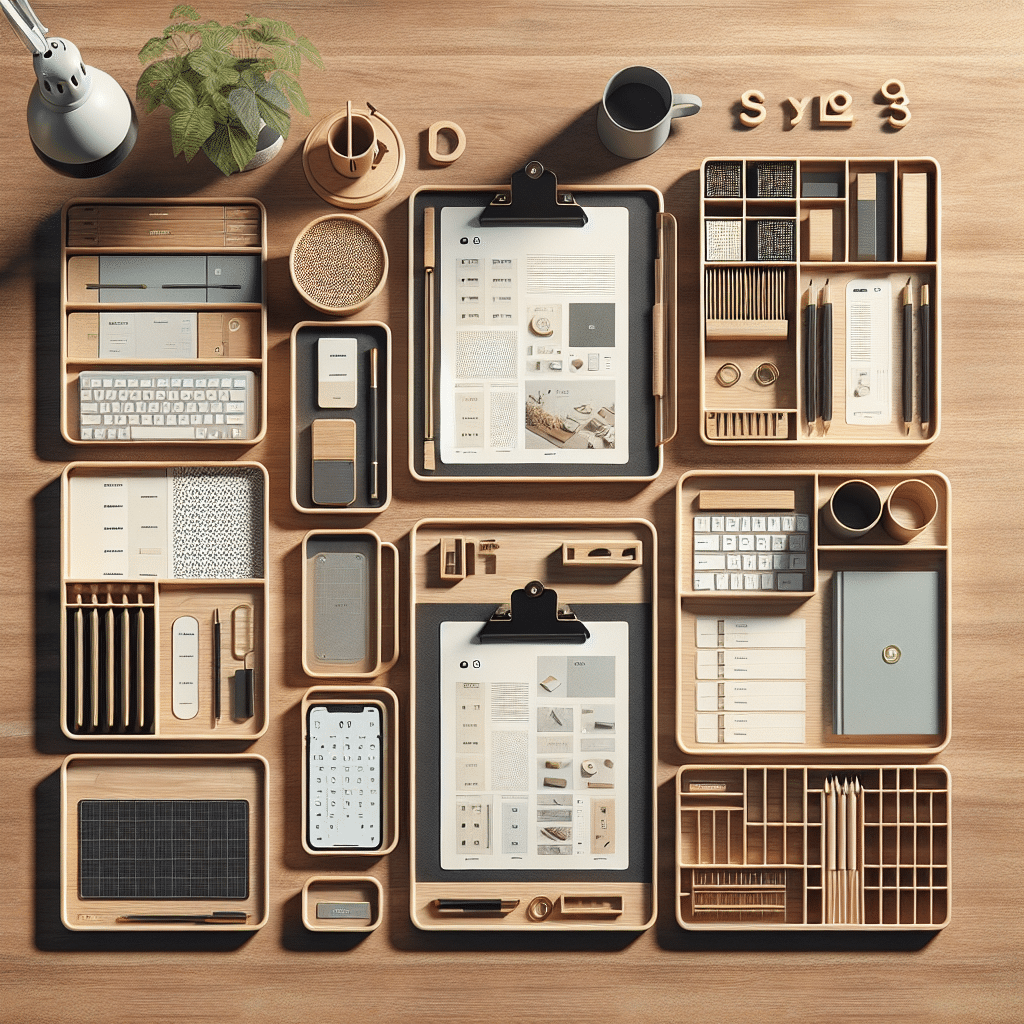Understanding Desk Trays for Documents and Files
Desk trays for documents and files are essential organizational tools in any workspace. They help manage clutter, improve efficiency, and ensure important papers are easily accessible. When it comes to office organization, using desk trays can significantly enhance productivity. This article explores the various types of desk trays, their benefits, and factors to consider when choosing the right options for your workspace.
Types of Desk Trays
-
Stackable Desk Trays
Stackable desk trays allow users to maximize vertical space. They are typically made from plastic, metal, or wood, and can be arranged in a custom configuration that suits individual needs. The versatility of stackable trays lets you increase storage as necessary without consuming additional desk real estate. -
Single-Tier Desk Trays
A single-tier desk tray is perfect for those who prefer a minimalist approach. It serves as a straightforward means to keep documents organized without the complexity of multiple layers. For individuals handling a limited number of files, single-tier trays provide a neat solution. -
Hanging Desk Trays
Hanging trays are often mounted on the wall and are beneficial in small workspaces. They utilize vertical wall space, keeping desks free from clutter. Ideal for frequently used documents, hanging trays can streamline workflows by putting important papers at eye level. -
Drawer Organizers
Drawer organizers can include compartments for different document sizes and types. They are ideal for keeping desk drawers organized and ensure that files remain sorted and easy to find. A neatly arranged drawer contributes to better workflow and efficiency. -
Pull-Out Trays
Pull-out trays integrate seamlessly into furniture and provide easy access to documents stored away in a drawer or cabinet. They can be designed specifically for file sizes, helping to maintain a sleek look while ensuring that important documents are within reach when needed.
Benefits of Using Desk Trays
-
Enhanced Organization
Desk trays enable a systematic way to categorize documents. Users can segregate files by urgency, type, or project, which reduces the time spent searching for papers and enhances overall organization. -
Increased Productivity
With everything within arm’s reach and organized, employees can focus better on their tasks. A clutter-free desk leads to less distraction, allowing workers to concentrate on their core responsibilities. -
Professional Appearance
A well-organized desk with neatly arranged desk trays conveys professionalism to clients and colleagues. First impressions matter, and an organized workspace can enhance credibility. -
Time-Saving
The time spent looking for lost documents can be frustrating and costly. Desk trays provide a designated place for every file, thereby saving time spent on locating materials throughout the day. -
Customizable Options
Desk trays come in various sizes, styles, and materials, catering to different tastes and office aesthetics. Users can choose the designs that fit their workspace while still serving the purpose of organization.
Materials Used in Desk Trays
-
Plastic
Lightweight and affordable, plastic desk trays are prevalent in many offices. They come in various colors and styles, making them a versatile choice for custom organization solutions. -
Metal
Metal trays add a modern touch to office spaces. They are sturdy and durable, often featuring a sleek design. Many metal trays come with rust-resistant finishes, making them long-lasting. -
Wood
Wooden desk trays exude warmth and style. They are available in various finishes, from natural wood tones to polished, modern aesthetics. Wooden trays often complement other office furniture, enhancing the overall decor. -
Fabric
Some desk trays incorporate fabric elements, offering a softer feel. Typically used in combination with sturdy frames, fabric trays provide visually appealing storage solutions that can soothe a busy workspace.
Key Features to Consider
-
Size and Dimension
Ensure the tray fits the available desk space and can accommodate the type of documents you handle regularly. An oversized tray can dominate your desk, while a small one may fail to meet your storage needs. -
Number of Compartments
Consider how many compartments you need. More compartments allow for better categorization but may require more space. Evaluate your workflow to determine the ideal number of sections. -
Accessibility
Look for trays that offer easy access. For example, trays with tilted fronts allow users to view their files without digging through stacks. -
Stackability
If desk space is a concern, selecting stackable trays can optimize storage. Ensure the trays securely stack without tipping over during use. -
Durability
Choose materials that offer longevity to withstand daily use. Investing in high-quality trays can save you money in the long run by reducing the need for replacements.
Organizing Tips with Desk Trays
-
Prioritize Your Files
Use desk trays to sort documents by priority. For example, keep frequently accessed files at the top and less urgent documents toward the bottom. -
Consistent Labeling
Labeling each tray can enhance organization. Clearly marked labels help ensure that you know where everything belongs, reducing confusion. -
Regular Maintenance
Schedule time weekly or monthly to clean out and reorganize your desk trays. Ensuring that outdated or unnecessary documents are removed can keep your workspace efficient. -
Digital Integration
Alongside physical documents, consider integrating digital systems. Use desk trays for hard copies while maintaining a digital file management system for quick access. -
Color Coding
Implement a color-coding system for different trays to easily identify their purpose. This visual cue speeds up the document retrieval process.
Desk trays for documents and files are an invaluable asset for effective workspace organization. Whether stackable, single-tier, or drawer organizers, choosing the right tray can lead to enhanced productivity, professionalism, and time efficiency. By considering various materials, sizes, and features, one can create a streamlined environment that supports efficient work habits.
